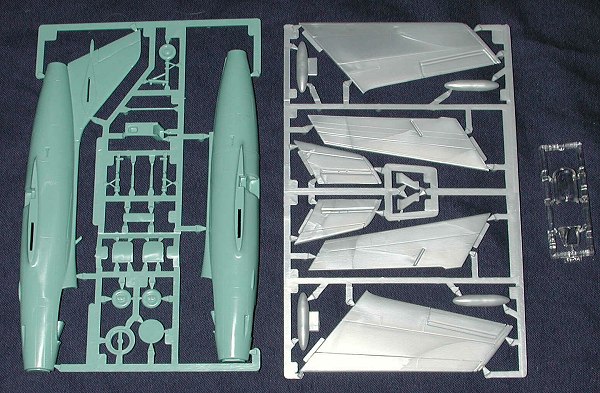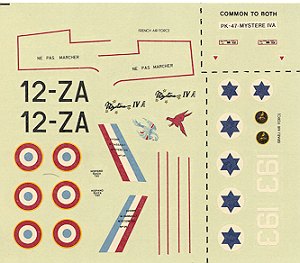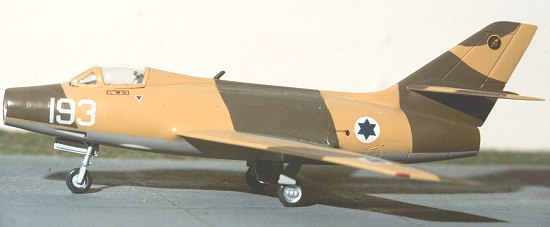
|
KIT: |
Matchbox 1/72 Mystere IVA |
|
KIT # |
PK 47 |
|
PRICE: |
Long OOP - Bought at a swap meet |
|
DECALS: |
Two aircraft |
|
REVIEWER: |
|
|
NOTES: |

|
HISTORY |
|
THE KIT |

Who could escape the allure of a Matchbox kit. Those colors, those decals, those windowed boxes. Also, the lack of detail, possibly even panel lines made by the mad trencher. There were things that set many on the road to scale models as a full-time hobby. This is one of those kits.
Face it. Matchbox was willing to kit those aircraft that others were afraid
to touch. For this, we can all be quite thankful. I think that this
eccentricity as well as the colored plastic was a conscious marketing
effort by the originators of the company. To offer what was then
unavailable is a strong allure. I know that I bought a bunch of kits from
them for that very reason. It also didn't hurt that they were true slammers
and could be built in a very short time. The lack of major detail made that
all possible!
This one is molded in a lovely light blue and light grey color. Most panel lines are raised. There is no wheel well detail, though they are full wells. There is also no cockpit detail beyond a rather generic bang seat. There is a two piece canopy, though it is designed to be glued in the closed position. Under wing things are relegated to two small fuel tanks. At least that is what they look like, though they may also be rocket pods. I'm really not sure.
As with all of these Matchbox kits, the painting guide is somewhat unique. It is provided separate from the building process and shows what various bits and pieces need to be painted. Colors are generic. There are markings for two planes and the back of the box shows them in color. These are repeated in the instructions and the first one is the box art plane from EC 2/12 in 1955. This plane is overall bare metal with a red spine. The other is for a desert camo version of the Israeli Air Force. The decals are a bit thick, but will stick like limpets once applied. They are crisply printed, and I can tell you from experience that the whites are a bit transparent.
|
CONCLUSIONS |
These kits were designed to pull pocket money out of kids and as such are perfect for someone's first glue kit. They are not so terrible that more experienced modelers wouldn't enjoy them, just be prepared for a lack of finesse!
Kit courtesy of me. Below is a photo of this kit built in
the 1980s.
If you would like your product reviewed fairly and quickly by a site that has over 200,000 visitors a month, please contact me or see other details in the Note to Contributors.